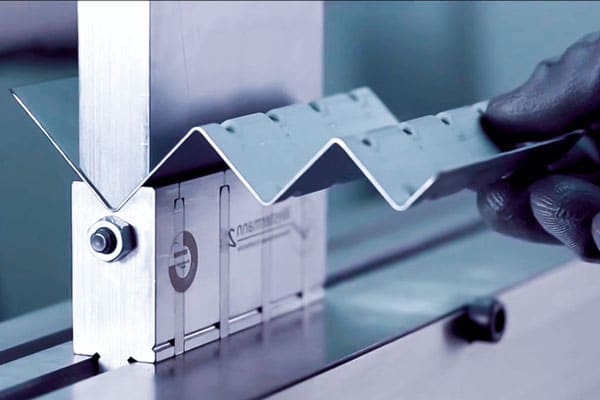Sheet metal manufacturing transforms flat metal sheets into complex three-dimensional components across countless industries. This versatile process creates everything from electronics enclosures to automotive panels and architectural elements with precision and repeatability.
You encounter sheet metal manufacturing products daily, often without realizing their sophisticated production requirements. Computer cases, appliance housings, HVAC ductwork, and vehicle body panels all rely on advanced sheet metal manufacturing techniques.
Sheet metal manufacturing combines traditional craftsmanship with modern technology to deliver consistent results. Your success depends on understanding how design decisions impact manufacturing processes, costs, and final product quality.
Comprehensive Sheet Metal Manufacturing Fabrication Processes
Cutting methods form the foundation of sheet metal manufacturing operations. Laser cutting delivers precise edges with minimal heat-affected zones, making it ideal for complex geometries and tight tolerances. Plasma cutting handles thicker materials efficiently while waterjet cutting processes virtually any thickness without thermal effects.
Forming techniques shape flat sheets into three-dimensional parts through sheet metal manufacturing processes. Press brake bending creates precise angles and complex profiles using specialized tooling. Stamping operations form intricate shapes in single operations, while rolling processes create cylinders and curved sections.
Joining processes complete sheet metal manufacturing assemblies through various methods. Welding creates permanent connections with excellent strength characteristics. Riveting provides mechanical fastening for applications where welding is impractical. Adhesive bonding joins dissimilar materials while distributing stress evenly.
Sheet metal manufacturing requires careful process sequencing to achieve optimal results. Cutting operations typically precede forming to ensure accurate blank dimensions. Forming processes follow specific sequences to prevent interference between features. Final assembly operations complete the manufacturing cycle.
Material selection significantly impacts sheet metal manufacturing outcomes. Steel offers strength and weldability for structural applications. Aluminum provides corrosion resistance and weight savings. Stainless steel combines durability with aesthetic appeal. Each material requires specific processing parameters.
Design for Sheet Metal Manufacturing Optimization Principles
Thickness optimization balances strength requirements with sheet metal manufacturing constraints. Thinner materials reduce weight and cost but may compromise structural integrity. Thicker sections increase strength but complicate forming operations and increase material costs.
Bend radius calculations prevent cracking during sheet metal manufacturing forming operations. Minimum bend radii depend on material type, thickness, and grain direction. Proper radius selection ensures consistent forming results without material failure.
Sheet metal manufacturing tolerances affect both cost and functionality. Tighter tolerances increase production costs but may be necessary for assembly requirements. Standard tolerances provide adequate fit for most applications while minimizing manufacturing complexity.
Feature placement influences the sheet metal manufacturing process efficiency. Holes, slots, and cutouts should align with standard tooling. Feature spacing must accommodate forming tool access and avoid interference during processing.
Sheet metal manufacturing designs benefit from consistent bend directions and uniform material thickness. These considerations simplify tooling requirements and reduce setup times between operations. Standardization improves quality while reducing costs.
Surface finish requirements impact the sheet metal manufacturing process selection. Mill finish provides basic protection at minimum cost. Painted finishes require additional processing steps but offer superior appearance and corrosion resistance. Plated finishes provide specific functional properties.
Quality Control Excellence in Sheet Metal Manufacturing Operations
Dimensional accuracy verification ensures that sheet metal manufacturing meets specification requirements. Coordinate measuring machines check critical dimensions and geometric tolerances. Optical comparators verify profile accuracy for complex shapes.
Surface quality inspection maintains sheet metal manufacturing standards throughout production. Visual inspection identifies scratches, dents, and other surface defects. Surface roughness measurements verify finish requirements for critical applications.
Sheet metal manufacturing requires in-process monitoring to prevent defects. Setup verification confirms proper tooling alignment before production begins. First article inspection validates process capability. Statistical process control monitors key variables throughout production runs.
Material traceability tracks sheet metal manufacturing components from raw material through final delivery. Batch records document processing parameters, inspection results, and any deviations from standard procedures. This documentation supports quality assurance and customer requirements.
Sheet metal manufacturing facilities implement comprehensive quality management systems. Operator training ensures consistent processing techniques. Preventive maintenance maintains equipment accuracy. Calibration programs verify measurement system integrity.
Advanced Technologies Transforming Sheet Metal Manufacturing
Automation advances revolutionize sheet metal manufacturing capabilities. Robotic material handling reduces labor costs while improving consistency. Automated tool changers minimize setup times between operations. Integrated production systems coordinate multiple processes seamlessly.
New material options expand sheet metal manufacturing applications. Advanced high-strength steels reduce weight while maintaining structural performance. Aluminum alloys offer improved formability for complex shapes. Specialty coatings provide enhanced corrosion resistance and appearance.
Sheet metal manufacturing increasingly incorporates sustainable production practices. Material waste reduction through optimized nesting algorithms minimizes scrap generation. Energy-efficient equipment reduces operating costs and environmental impact. Recycling programs recover value from production waste.
Digital integration connects sheet metal manufacturing operations through Industry 4.0 principles. Real-time monitoring systems track production progress and equipment performance. Predictive maintenance prevents unexpected downtime. Data analytics optimizes process parameters for improved outcomes.
Sheet metal manufacturing delivers versatile solutions across diverse industries through sophisticated processes and advanced technologies. Success requires understanding the interplay between design decisions, material properties, and manufacturing capabilities to achieve optimal results.
Looking for expert sheet metal manufacturing services for your complex production requirements? Contact LT Century today to leverage advanced fabrication capabilities with professional outsourcing solutions designed for precision and delivery excellence.
Reference
*Image from https://www.lyah-machining.com/

